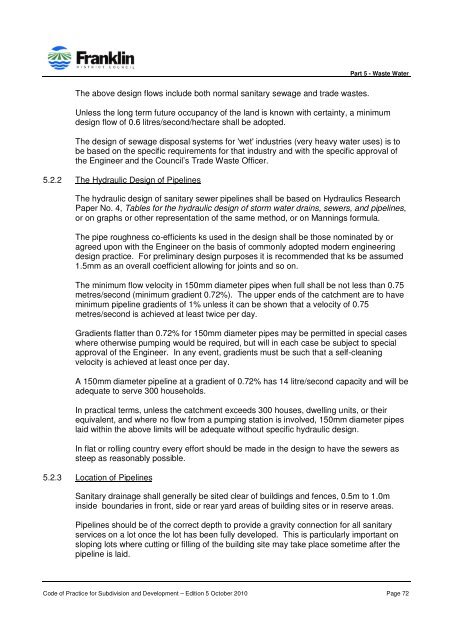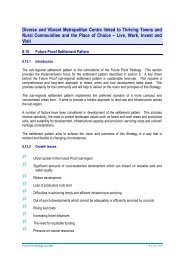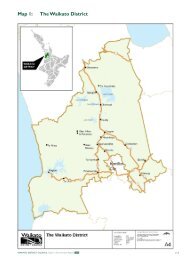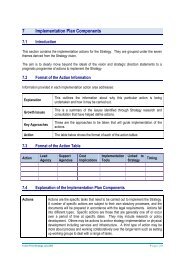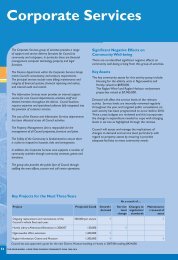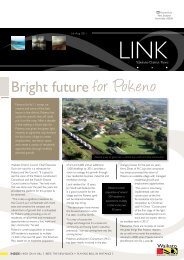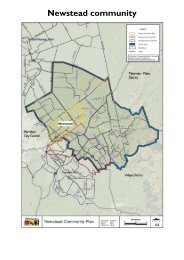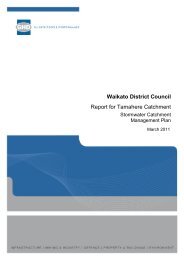CODE OF PRACTICE FOR SUBDIVISION AND DEVELOPMENT
code of practice for subdivision and development - Waikato District ...
code of practice for subdivision and development - Waikato District ...
You also want an ePaper? Increase the reach of your titles
YUMPU automatically turns print PDFs into web optimized ePapers that Google loves.
Part 5 - Waste WaterThe above design flows include both normal sanitary sewage and trade wastes.Unless the long term future occupancy of the land is known with certainty, a minimumdesign flow of 0.6 litres/second/hectare shall be adopted.The design of sewage disposal systems for 'wet' industries (very heavy water uses) is tobe based on the specific requirements for that industry and with the specific approval ofthe Engineer and the Council’s Trade Waste Officer.5.2.2 The Hydraulic Design of PipelinesThe hydraulic design of sanitary sewer pipelines shall be based on Hydraulics ResearchPaper No. 4, Tables for the hydraulic design of storm water drains, sewers, and pipelines,or on graphs or other representation of the same method, or on Mannings formula.The pipe roughness co-efficients ks used in the design shall be those nominated by oragreed upon with the Engineer on the basis of commonly adopted modern engineeringdesign practice. For preliminary design purposes it is recommended that ks be assumed1.5mm as an overall coefficient allowing for joints and so on.The minimum flow velocity in 150mm diameter pipes when full shall be not less than 0.75metres/second (minimum gradient 0.72%). The upper ends of the catchment are to haveminimum pipeline gradients of 1% unless it can be shown that a velocity of 0.75metres/second is achieved at least twice per day.Gradients flatter than 0.72% for 150mm diameter pipes may be permitted in special caseswhere otherwise pumping would be required, but will in each case be subject to specialapproval of the Engineer. In any event, gradients must be such that a self-cleaningvelocity is achieved at least once per day.A 150mm diameter pipeline at a gradient of 0.72% has 14 litre/second capacity and will beadequate to serve 300 households.In practical terms, unless the catchment exceeds 300 houses, dwelling units, or theirequivalent, and where no flow from a pumping station is involved, 150mm diameter pipeslaid within the above limits will be adequate without specific hydraulic design.In flat or rolling country every effort should be made in the design to have the sewers assteep as reasonably possible.5.2.3 Location of PipelinesSanitary drainage shall generally be sited clear of buildings and fences, 0.5m to 1.0minside boundaries in front, side or rear yard areas of building sites or in reserve areas.Pipelines should be of the correct depth to provide a gravity connection for all sanitaryservices on a lot once the lot has been fully developed. This is particularly important onsloping lots where cutting or filling of the building site may take place sometime after thepipeline is laid.Code of Practice for Subdivision and Development – Edition 5 October 2010 Page 72


